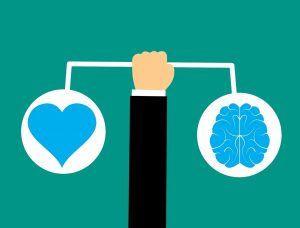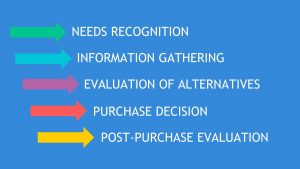28 Jun Customer decision making – The science behind the buying process

The customer decision making process has changed dramatically in recent years. There are now many more influential factors which brands need to be aware of.
Customers have more power than ever before. They can now take time to fully research a product before purchasing. This research goes way beyond a quick Google search, and it’s not just price that they are benchmarking, they’re reading customer reviews, online forums and asking their own communities for recommendations and feedback. With most customers owning a smartphone, this research is now being done on the move.
These shifting decision-making patterns mean that brands must have response strategies at the ready. When focusing on customer experience design or journey mapping strategies – how many of you really take into consideration what the customer may be thinking, feeling AND doing at each stage? What are the driving forces behind the decisions they are making? And importantly, how can brands use the decision making process to their advantage?
Customer decision making process

Needs Recognition
The stage in which the customer becomes aware of the product or service they need or desire. Often, the customer might not have been aware of the product. They may have seen a promotion/advertisement which prompted the decision or desire to purchase.
Considerations
Marketing communications play a huge role at this stage. The messaging needs to land with the customer, how will the product or service meet their wants, desires or needs? Promote the solution, not the product. You need to be where your customers are, ensure you are promoting in the appropriate channels.
Information Gathering
Once the customer identifies a product or service they would like to purchase, they then go into research mode; where can they purchase the product from, have other customers purchased the same product and where did they purchase it from, what value adds did they receive, what was the customer experience like, what kind of post-purchase support/follow-up did they receive.
Considerations
Make sure your website is functioning, responsive and up to date. Customers are impatient, if a website is slow to load, they won’t wait, they’ll move onto the next.
Have you researched your own product or service? What information do you find? Do you encourage customer reviews, and respond to those who do take the time to provide one? Find out how your brand is being perceived in the market, be active in these channels. Also benchmark against your competitors. As mentioned, you need to be where your customers are, if that’s social media – then a strong social voice is a must.
Evaluation of Alternatives
The customer will then evaluate, compare and benchmark the various information they have gathered before they make a decision on who they wish to purchase from. The bigger the purchase, the longer the evaluation.
Considerations
The customer may have questions they wish to ask ahead of purchase. Ensure you have a support function who can respond to any queries and put the customer at ease. Many websites have a dedicated FAQ for this exact reason. You could also take this opportunity to retarget the customer – remind them why they should purchase from you.
Purchase Decision
Once the customer has decided who they wish to purchase from – they will make the purchase either in-store or online. This is the conversion stage.
Considerations
The buying process needs to be seamless – everything should be designed to make the experience as easy as possible for the customer. Imagine a potential customer has spent time researching a product, reading countless review sites to support their decision, however when they go to purchase the product from your brand, either the website crashes or the store attendant is rude to them – it changes everything.
Post-Purchase Evaluation
Assuming the customer had a good buying experience, they will be feeling very positive about the brand. We refer to this period as the moneymoon. Brands need to take advantage of the customer’s current mindset to activate the path to re-purchase.
Considerations
Once you’ve made a sale, the next step is to continue the conversation with the customer. Don’t email them before they have even left the store asking for information solely to support your NPS. Thank them for purchasing from you – think of other ways you can add value, without expecting anything in return. Your goal is for them to skip the first few steps of the decision-making process for their next purchase.
Capture customer data throughout the decision making process
Each stage of the decision making process enables you to capture invaluable customer data, which will help you get to understand your customers better. Use this data to learn your customers behaviour, look at every touchpoint they had with your brand – from online research to in-store purchases, what they bought, why they bought it, how they bought it. The more data you have, the stronger personalised experiences you can deliver in the future and the greater chance you have of securing them as a repeat customer.
Summary
Understanding the science behind decision making is fundamental to your communication and positioning strategies. We (humans) can change moods in a heartbeat, if something is not happening as we expect it to, the impact on our behaviour can be huge.
When designing customer journeys consider the 5 stages of the decision making process. Go through the experience yourself. This will give you a clearer view of what your customers are thinking, which will help you find ways to differentiate your brand.
Customer data captured during the decision making process will help you stay abreast of your customer’s emotional drivers and behaviours – which, in turn, will empower you to continue the customer conversation.
Customology are specialists in customer lifecycle management. Contact a Customologist today on 07 3902 7700 or hi@customology.com.au for more information on how we can help you design a strategy around the decision making process using the customer data you already have.
Subscribe to receive our latest insights
|
Listen to...
|


